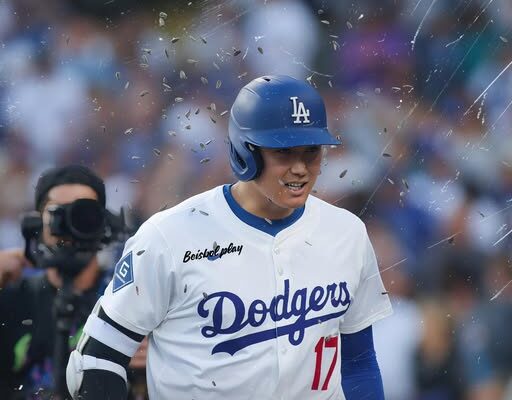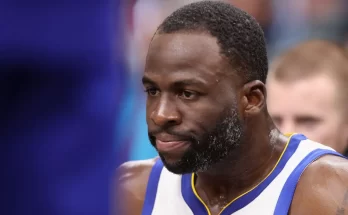Shohei Ohtani’s 30-Homer Surge Before the All-Star Break: A Natural Marvel Defining Modern Baseball
It’s often said that baseball is a game of unpredictability, a sport where even the best hitters fail seven out of ten times, and where momentum can shift in a single pitch. But when it comes to Shohei Ohtani, unpredictability takes a different form. Not in his inconsistency, but in the way he consistently redefines what we thought was possible on a baseball field. And in the 2025 MLB season, with over 30 home runs before the All-Star Game, Ohtani isn’t just having another great year — he’s creating history, once again, like it’s second nature.
The idea of a player hitting 30 or more home runs before the Midsummer Classic is rare. Doing it while also being one of the most feared hitters in the sport — and formerly, one of its most dominant pitchers — is something that defies convention. For most players, such a surge would be an outlier, a once-in-a-lifetime hot streak. For Ohtani, it feels almost inevitable, as though the laws of baseball physics simply bend around his talent
In the 2025 season, Shohei Ohtani is donning a different uniform — that of the Los Angeles Dodgers. After signing his record-shattering $700 million contract in the 2023 offseason, Ohtani sat out pitching duties in 2024 due to elbow surgery. The pressure was immense: a historic contract, enormous media attention, and expectations from one of the most storied franchises in sports. But Ohtani responded in the way only he can — by dominating at the plate.
Now, halfway through the 2025 season, Ohtani leads the majors in home runs, slugging percentage, and OPS. With over 30 home runs before the All-Star break, he’s on pace for a season that could challenge the records set by legends like Barry Bonds, Mark McGwire, and Babe Ruth.
And yet, unlike the controversial sluggers of past decades, there’s an undeniable purity to Ohtani’s excellence. No scandal. No shortcuts. Just hard work, unparalleled discipline, and a love for the game that’s evident in every at-bat.
Ohtani’s success isn’t just a personal milestone — it’s a cultural moment. When a Japanese-born player achieves this level of dominance in America’s pastime, the ripple effects are global. In Japan, Ohtani is already a national hero, with coverage of his games airing live despite time zone differences. Elementary school students imitate his stance. Adult fans wear his Dodgers jersey on Tokyo trains. His presence has transcended sport to become a symbol of international excellence and cultural pride.
The impact echoes what Ichiro Suzuki accomplished in the early 2000s, but on a different scale. While Ichiro was a master of contact hitting and speed, Ohtani is a showcase of sheer power and athletic versatility. He’s not just one of the best Japanese players in MLB — he’s one of the best players in MLB, period.
In the United States, Ohtani’s fanbase stretches beyond Los Angeles. His jersey is one of the top sellers in MLB. His highlights dominate social media. Kids in New York, Chicago, and Atlanta chant his name even when he’s not playing in their city. He’s become the face of baseball for a new generation — a trilingual, bicultural, humble superstar with an unmatched skill set.
To understand how rare Ohtani’s 30+ home runs before the All-Star break truly are, consider this: since the All-Star Game was instituted in 1933, fewer than 15 players have achieved that feat in a single season. Names like Barry Bonds, Ken Griffey Jr., Sammy Sosa, and Mark McGwire are among the few to do it. All of them were single-dimensional players — elite sluggers, yes, but only batters.
Ohtani, by contrast, is a two-way player — or at least he was, until injury temporarily ended his pitching for the season. Prior to that, he was throwing 100 MPH fastballs and striking out batters with his devastating splitter and slider. No one in baseball history — not even Babe Ruth — maintained elite production on both sides of the ball the way Ohtani has since arriving in MLB.
Ohtani has already won an MVP award (2021), finished runner-up (2022), and took home a unanimous second MVP in 2023. If he continues his 2025 pace, a third MVP might not even be a question of if, but how unanimously he wins it again.
So how has Ohtani reached this milestone so quickly?
For one, he’s been remarkably healthy. After years of battling injuries and workload management concerns, 2025 has seen a fully recovered, focused Ohtani who is channeling all his energy into hitting. Without the physical toll of pitching every five days, he has had more time to prepare, recover, and fine-tune his approach at the plate.
Second, his approach at the plate has matured. Early in his MLB career, Ohtani sometimes chased pitches out of the zone, particularly breaking balls low and away. In 2025, he’s cut down on strikeouts, improved his walk rate, and shown better pitch recognition. The result is a higher on-base percentage, more consistent power, and fewer slumps.
Also worth noting is the lineup protection offered by the Dodgers. Surrounded by other elite hitters like Mookie Betts and Freddie Freeman, pitchers can’t simply pitch around Ohtani. He’s seeing more pitches in the zone — and when he gets them, he doesn’t miss.
Mechanically, Ohtani has one of the most efficient swings in baseball. It’s a mix of Japanese precision and American power, crafted by years of training in both NPB (Nippon Professional Baseball) and MLB. His balance, bat speed, and lower-body drive create home runs that are not only frequent, but majestic — towering shots that leave pitchers and fans alike shaking their heads.
Ohtani’s rise has coincided with MLB’s efforts to modernize and globalize the sport. In an age where social media highlights carry as much weight as box scores, Ohtani’s viral moments — 450-foot homers, reactions to his teammates, candid interviews — have helped rebrand baseball as exciting and international.
He’s fluent in Japanese and increasingly comfortable in English, with a soft-spoken charm that wins over both reporters and fans. But beneath that humble exterior is a fierce competitor with an obsessive drive to improve.
Off the field, his marketing power is enormous. Endorsements from companies like New Balance, Seiko, Asics, and Mitsubishi have made him one of the highest-paid athletes globally. He is simultaneously a Japanese icon, an American sports star, and a global ambassador for baseball.
Ohtani’s continued dominance has opened doors for a new generation of international players. Scouts are now searching Asia for the next two-way phenom. MLB front offices are reevaluating their stance on dual-role players, a once-taboo concept now validated by Ohtani’s unprecedented success.
Youth baseball programs in the U.S. are telling kids, “Don’t choose — you can hit and pitch.” Ohtani has shattered the myth that specialization is the only path to success. He has made baseball fun again, proving that you don’t need to fit into a conventional box to be great.
And for the Dodgers, who have long been a global brand, Ohtani’s presence has supercharged their reach in Asia. Merchandise sales have skyrocketed in Japan, Korea, and Taiwan. Tourists visiting Dodger Stadium now include international fans specifically there to see Ohtani in action.
With half the season still remaining, speculation is already swirling: Could Ohtani hit 60 home runs? Could he break the AL record of 62 set by Aaron Judge in 2022? Could he become the first player to win MVP without pitching a single inning all year?
These questions were once unthinkable. Now, they seem entirely within reach. If Ohtani maintains this pace, he will not only cement himself as the best player in baseball — he may go down as the most complete player the game has ever seen.
And let’s not forget: Ohtani is still just 30 years old. His prime is still here, and with his pitching expected to return in 2026, we may only be witnessing part of the full picture. This is a player rewriting the boundaries of what’s possible, year after year.
In a sport that prides itself on history and tradition, Shohei Ohtani is the ultimate disruptor. But he does so not with arrogance, but with grace. Every swing of his bat is a testament to his years of work, every home run a reminder of how extraordinary he truly is.
Reaching 30 home runs before the All-Star break is a milestone that, for anyone else, would be the peak of a career. For Ohtani, it’s just another chapter in an already mythic story — one that continues to unfold before our eyes.
As we look ahead to the second half of the season, one thing is clear: Shohei Ohtani is no longer just redefining baseball. He is baseball — the future, the present, and a reminder of everything that makes the
game beautiful.



